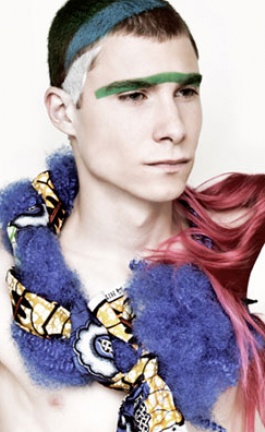photo © Vilma Jaruseviciute // Urban Dolls (2010)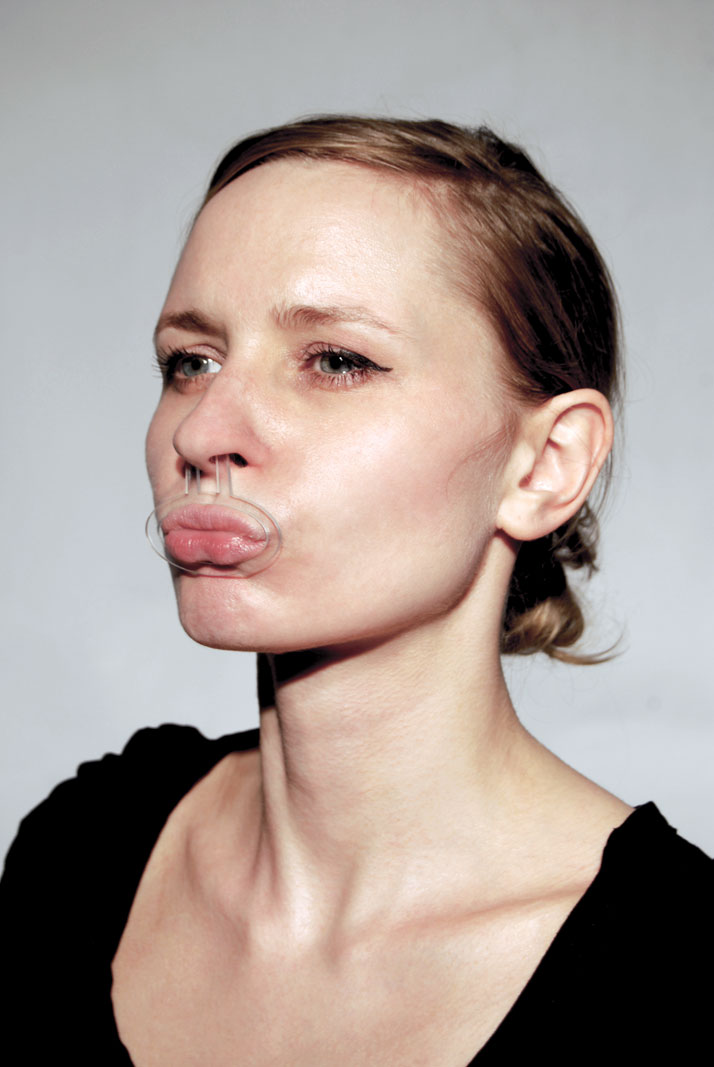
photo © Maya Art // Design Faction, 2011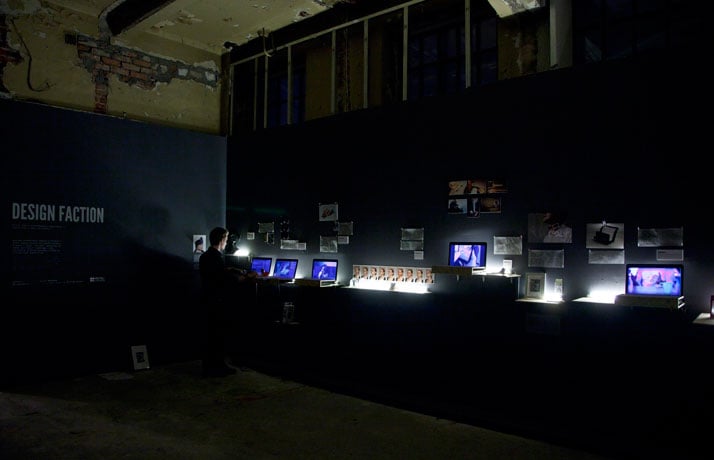
Lat. fictio, f. – forming, feigning
Lat. factio, f. – a making, doing
'Design Faction' was running from 20 to 30 October 2011 as part of the 5th International Lodz Design Festival in Poland in partnership with the British Council - selected as one of ten presentations proposed by external curators. It was a crucial show that epitomized not only the relevance of design in our everyday life but also the fact that design, as a form of communication, operates as an essential critical commentary. 'Design Faction' raised important questions and urged the viewer to fantasize about how technological advancements not only generate change, but how these changes affect us as humans in our present and future. An exhibition which proves that in design as in life, creativity, critical thinking and new technologies, interact and feed one another in unexpected ways. Curated by Kasia Jerowska, 'Design Faction' looked into 'change', which was this year’s festival main theme. It presented twelve stories that explore the space between design and science. The projects speculate on possibilities of the human body blurring the border between innovation and critical commentary.
photo © Maya Art // Design Faction, 2011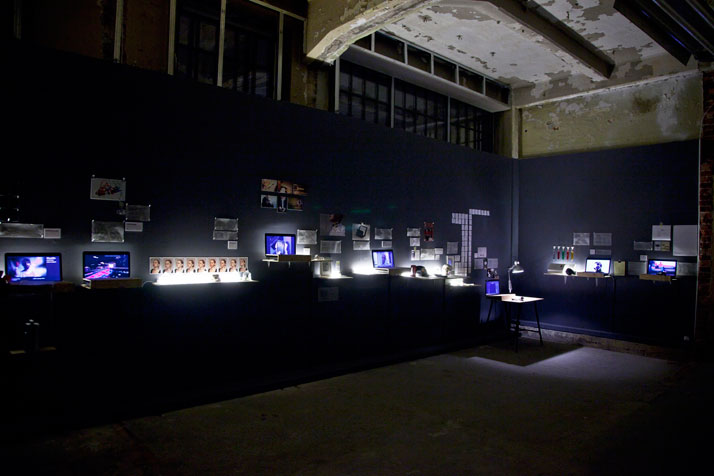
>> For the last hundred years, human body has changed like never before. Research shows that we are taller, we weigh more, our bodies have different build. This way, human organism has adjusted to a variety of changes which we have been exposed to during the last century. Where biology still has to work on something, designers get involved. Mobile mini-devices, temporary prostheses and active implants are their response to the technological progress. These are also examples showing how much design itself has changed. A wide spectrum of 2D and 3D planning has been joined by creation of alternative scenarios and speculative solutions which run far into the future. Design is also a critical commentary on contemporariness – our lifestyle, ambitions and desires. At the same time, it disturbs our comfort of being a user, making us wonder if what we witness is design fiction or another step in the technological evolution.<<
Kasia Jerowska
Scan from Mnemosyne Atlas of Aby Warburg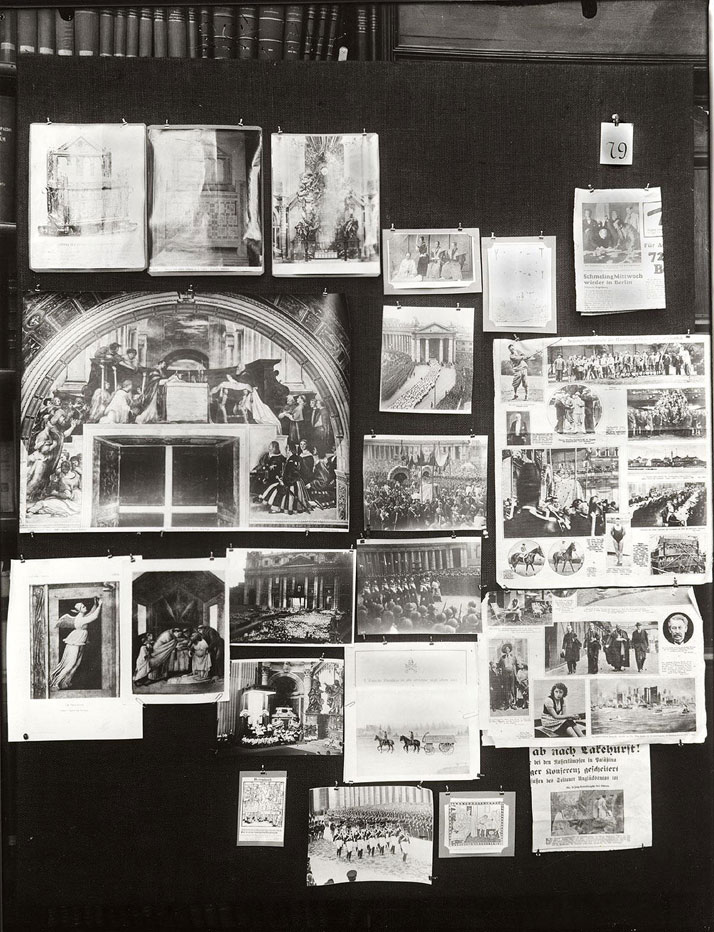
Below you will find descriptions of the projects displayed. Each of them has been accompanied by various reference materials that aimed to illustrate their research. With the moodboard-style curator Kasia Jerowska payed homage to Aby Warburg, the genius researcher and theorist.
photo © Maya Art // Design Faction, 2011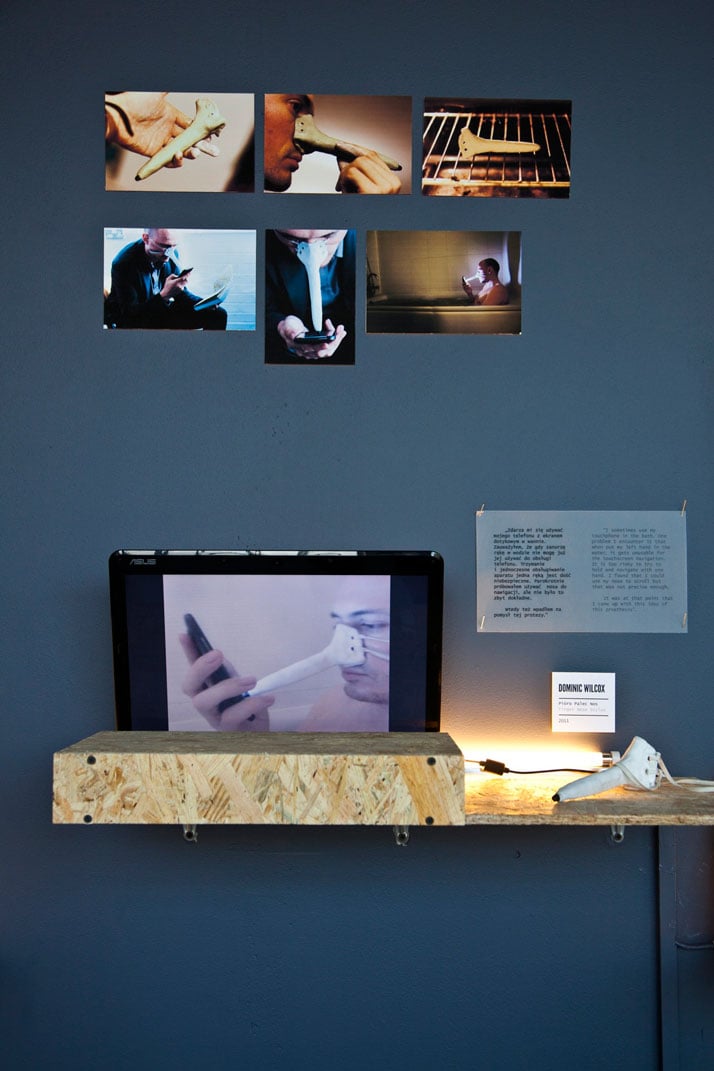
Dominic Wilcox // Finger Nose Stylus (2011)
An almost humorous invention, prompts us into rethinking about our precious smart phones whose introduction into our lives has not only altered the history of mobile phones but also our lives as consumers. By encountering a fairly common problem such as –the difficulty of using a Smartphone’s touch-screen in the bath with one hand- Wilcox invented this apparatus, which resembles a bird’s beak. The purpose of Finger Nose (whether it is just funny or caustic) certainly manages to put a smile on your face.
''I sometimes use my touchphone in the bath. One problem I encounter is that when put my left hand in the water, it gets unusable for the touchscreen navigation. It is too risky to try to hold and navigate with one hand. I found that I could use my nose to scroll but that was not precise enough. It was at that point that I came up with this idea of a nose prosthesis''. Dominic Wilcox
photo © Maya Art // Design Faction, 2011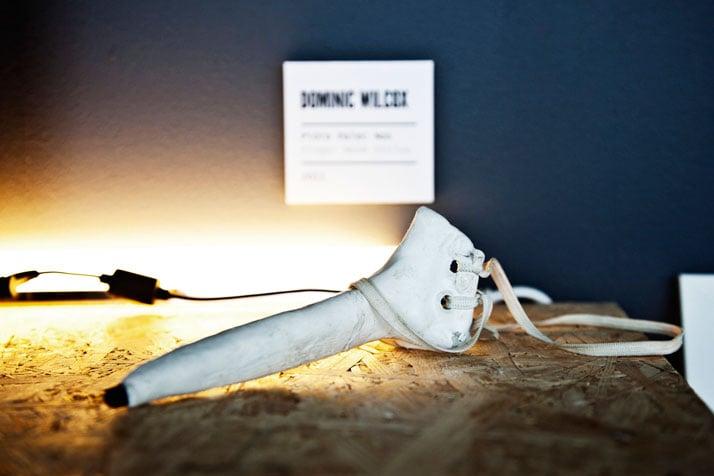
photo © Dominic Wilcox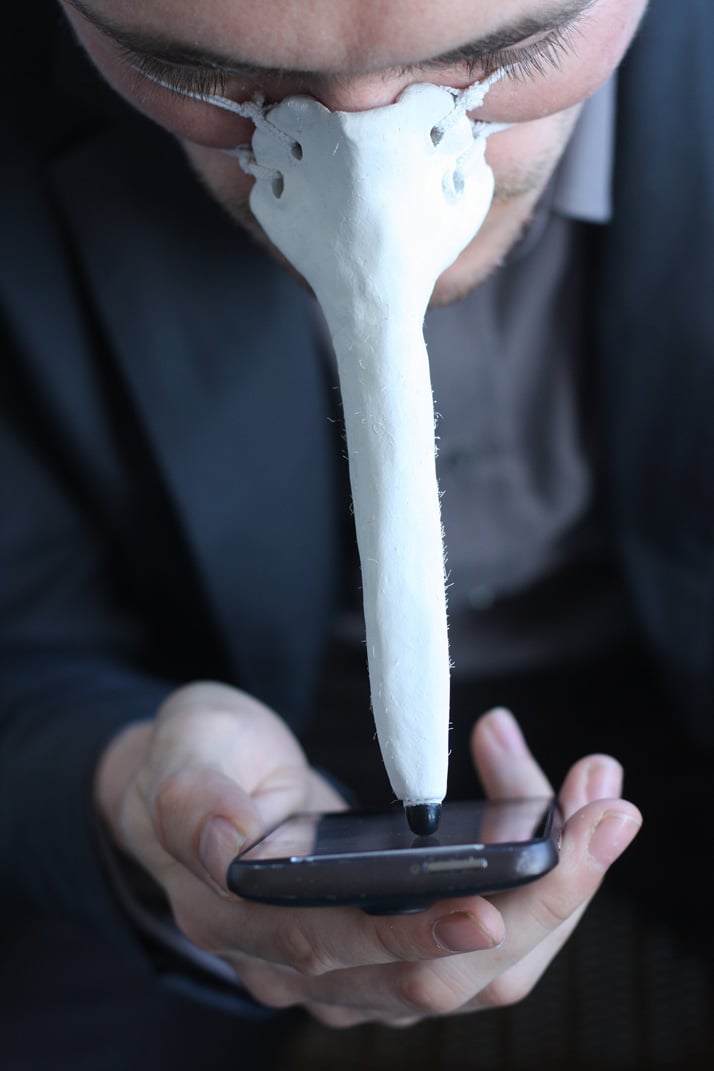
photo © Ludwig Zeller
Ludwig Zeller // Introspectre (2011)
Machines often make sounds that can tell you about what is going on in them. With the human mind being understood increasingly as a machine, would we be able to use sound to understand our inner states better? On the basis of brainwaves characteristics, the Introspectre gives an insight into the activities of your brain in order to warn you when you are about to drift off in your thoughts.
photo © Marek Kultys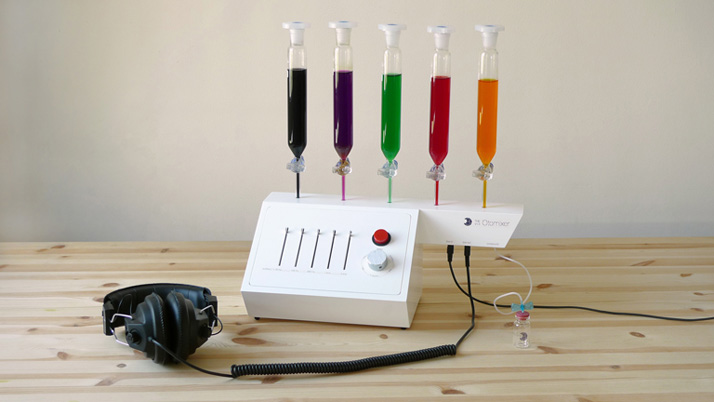
Marek Kultys // The End of Hearing (2011)
The Otomixer is a hearing regulation tool of the future. It is suggested in response to the increasing demand for a system providing a way of dealing with noise pollution. The Otomixer adjusts one's hearing to the soundscape by administering a dose of ototoxic drugs, which temporarily paralyses hearing. A straightforward interface precisely translates equaliser settings into a customised antibiotics compound, which can be injected or taken orally. By adjusting the density of the compound it is possible to control the duration of the toxic intervention. It can be everything from a daily wellness pill to a life-long vaccination against noise.
photo © Santiago Ortega Haboud
Santiago Ortega Haboud // Blink to See Clearly (2011)
This apparatus, designed on the Open Source basis, enable temporary modifications of seeing. Each of the modes filters, highlight or transform the reality that we are traditionally accustomed to. These modifications influence the way we perceive it and as a result they change our reaction towards it. This apparatus, designed on the Open Source basis, enable temporary modifications of seeing. Each of the modes filters, highlight or transform the reality that we are traditionally accustomed to. These modifications influence the way we perceive it and as a result they change our reaction towards it.
photo © Maya Art // Design Faction, 2011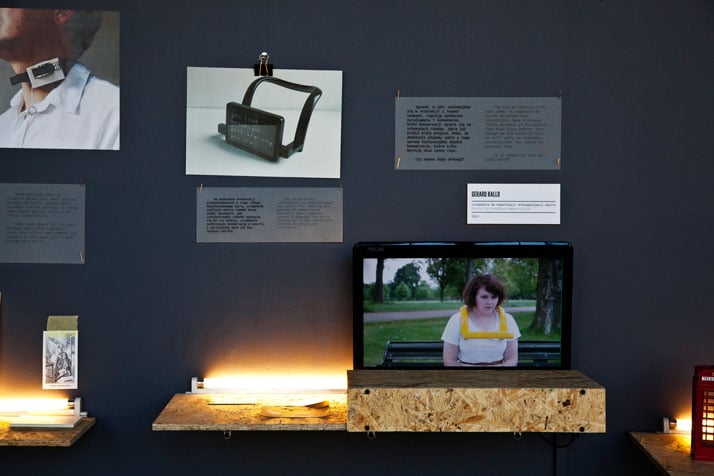
photo © Gerard Rallo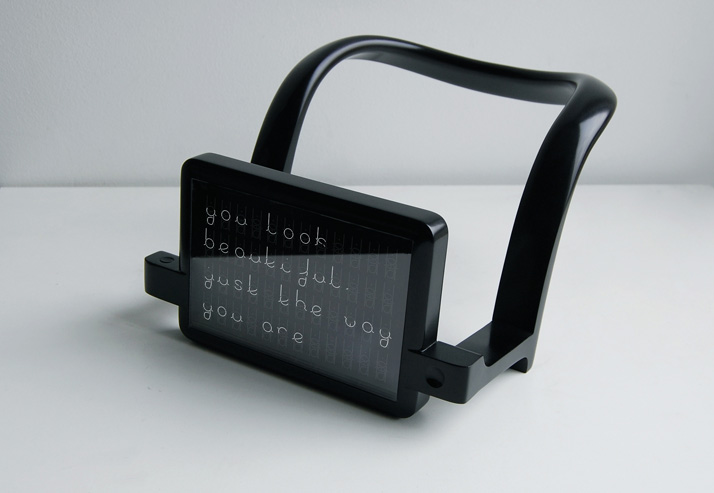
Gerard Rallo // Device for Mindless Communication (2010)
The way we interact with each other is regulated by social paradigms and conventions. Many conversations follow patterns, which we are totally aware of, wasting our precious time. Is it something that we could avoid? This device tracks conversations you have throughout your entire life, analysing your patterns of communication. Eventually, when a repeated pattern is detected, the device replaces you in that conversation, carrying on without our involvement.
photo © Maya Art // Design Faction, 2011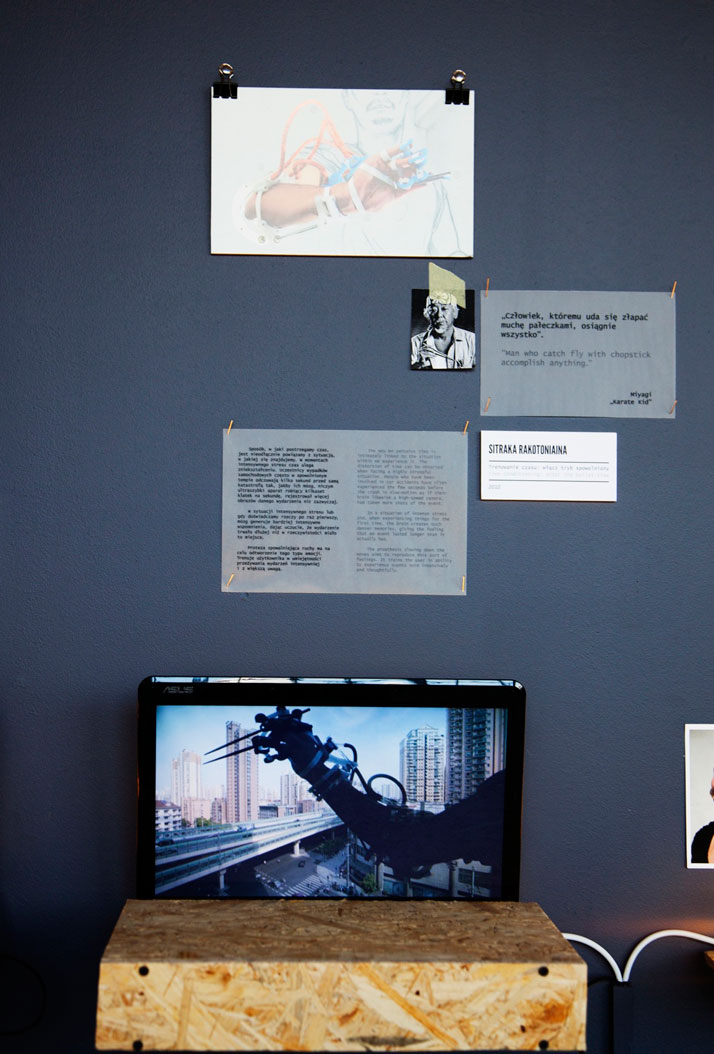
Sitraka Rakotoniaina // Time Conditioning: 'Enter the bullet-time' (2010)
The way we perceive time is intimately linked to the situation within we experience it. The distortion of time can be observed when facing a highly stressful situation. People who have been involved in car accidents have often experienced the few seconds before the crash in slow-motion as if their brain likewise a high-speed camera, had taken more shots of the event. In a situation of intense stress and, when experiencing things for the first time, the brain creates much denser memories, giving the feeling that an event lasted longer than it actually has. The prosthesis slowing down the moves aims to reproduce this sort of feelings. It trains the user in ability to experience events more intensively and thoughtfully.
photo © Sitraka Rakotoniaina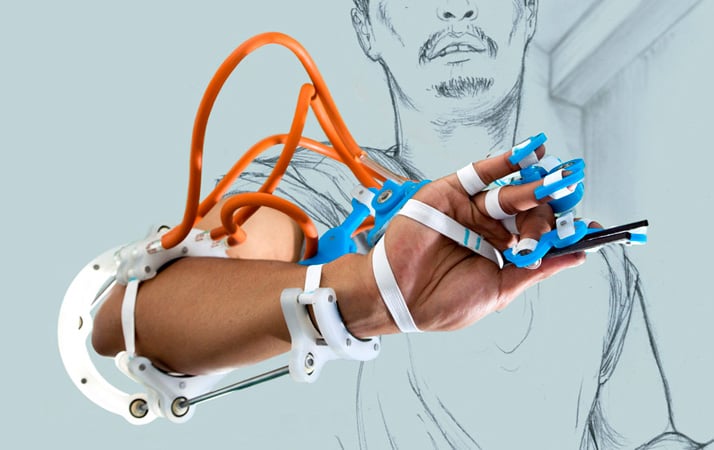
photo © Maya Art // Design Faction, 2011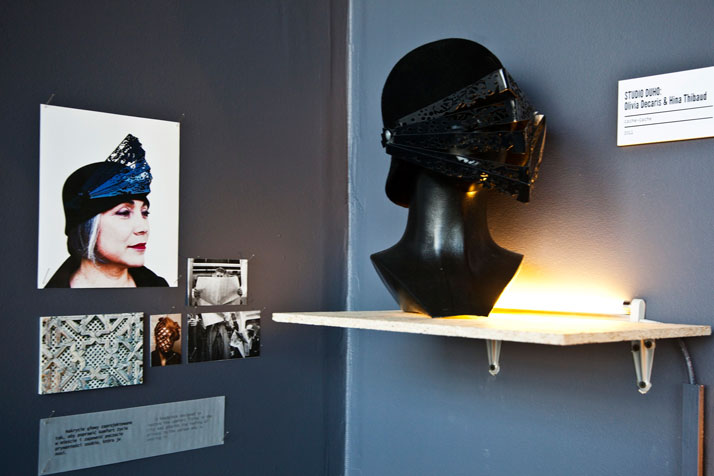
Sudio Duho: Olivia Decaris + Hina Thibaud // Cache-Cache (2010)
A headpiece designed to improve the comfort living in the city and provide the feeling of privacy to the person who is wearing it. Laser cut pattern is inspired by the latticework derived form the architecture of the Arab world.
photo © Maya Art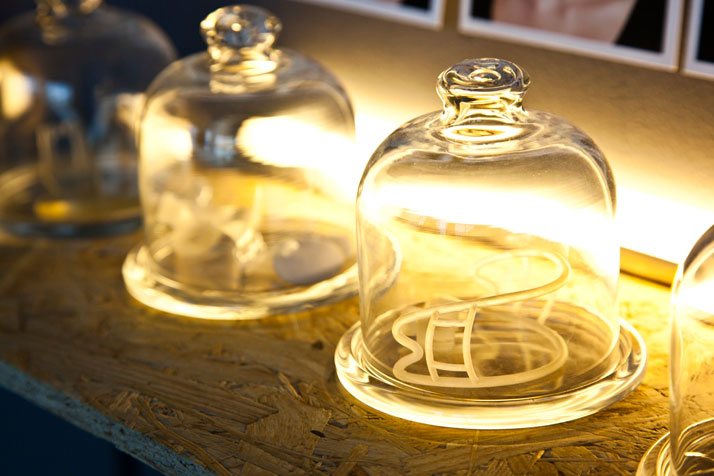
photo © Maya Art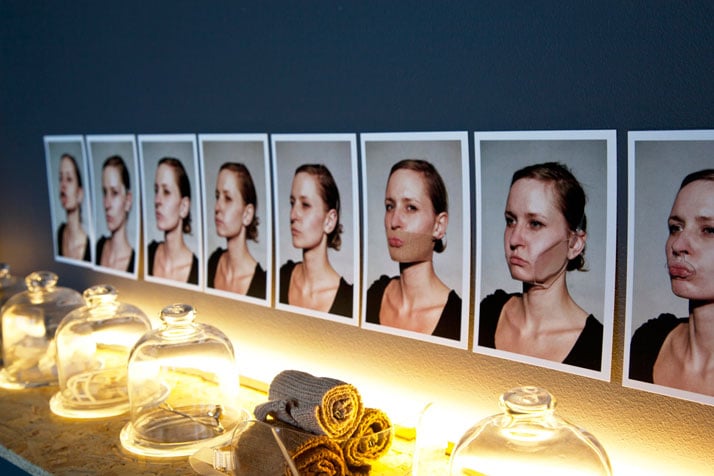
Vilma Jaruseviciute // Urban Dolls (2010)
It is getting more and more difficult to define a concept of contemporary beauty. In urban society, where the hunt for perfection begins at an early age and modified ‘plastic beauties’ wave from the covers of glossy magazines, humanity’s struggle for perfection appears almost limitless. This project is an explorative journey in search of alternatives that could replace plastic surgery. Design becomes a mediator between humans and existing body modification processes; permanent procedures are transformed into flexible, temporary prosthetics.
''In a time where the hunt for perfection begins at an early age and modified ‘plastic beauties’ glare all too obviously from the covers of glossy magazines, humanity’s struggle for perfection appears almost limitless.'' Vilma Jaruseviciute
photo © Vilma Jaruseviciute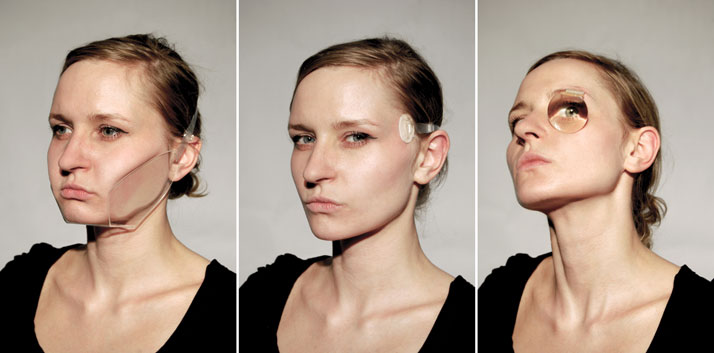
photo © Maya Art // Design Faction, 2011
photo © Maya Art // Design Faction, 2011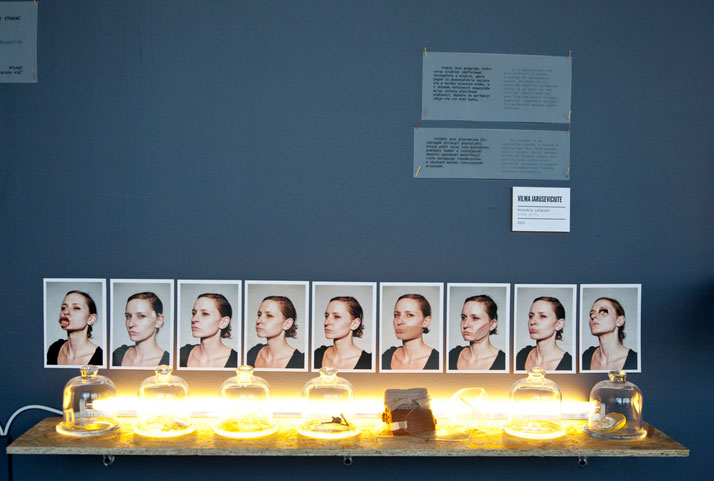
photo © Maya Art // Design Faction, 2011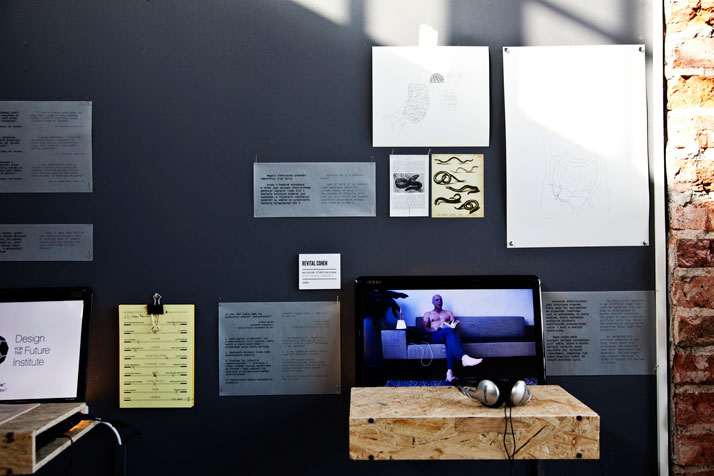
photo © Revital Cohen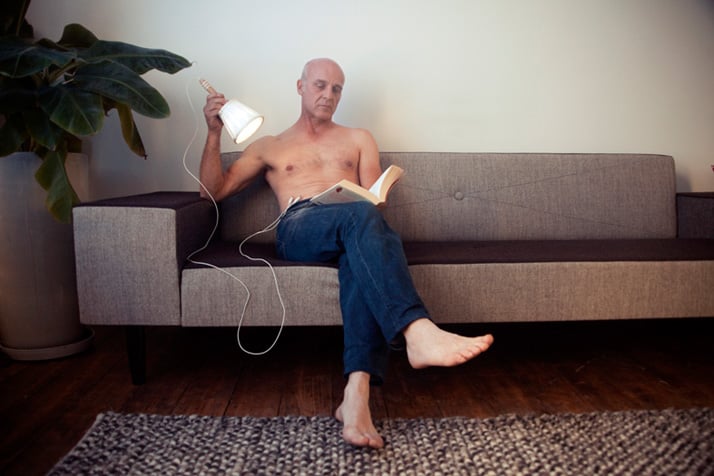
Revital Cohen // Electrocyte Appendix (2009)
The Electrocyte Appendix is an artificial organ that could be implanted into the body to allow people to become electric organisms. The organ is constructed of artificial cells that mimic the electrocyte mechanism by converting blood sugar into electricity. By replacing the vestigial elements of the body, means these that throughout the evolution lost their importance (e.g. appendix) the new organ may readjust the body in order to sustain its new way of living.
photo © Alexandra Daisy Ginsberg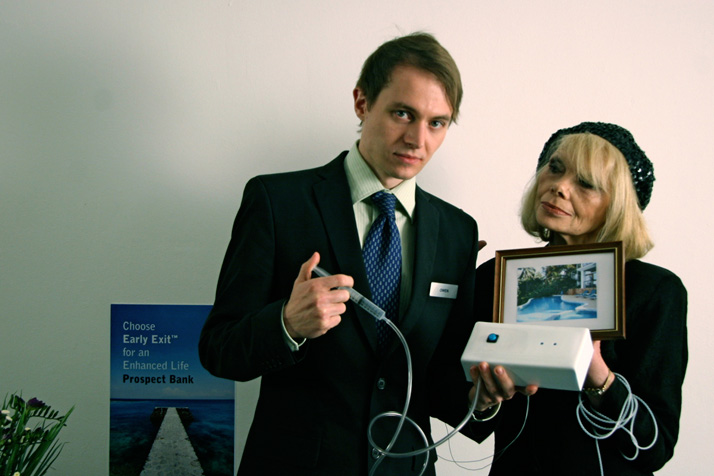
Alexandra Daisy Ginsberg // Self Worth. Genetic Credit after the Crunch (2008)
After the Credit Crunch, what will we be left with? Cash, currency, stocks and possessions will be worthless. The only bankable commodity left is YOU, the new gold standard. As basic elements and minerals, the human body is valued at about $4.5, but your DNA is a prized asset. This research looks at a future scenario where all major purchases - such as NHS contributions, mortgages, tax, pensions - are based on a system of genetic credit.
photo © Maya Art // Design Faction, 2011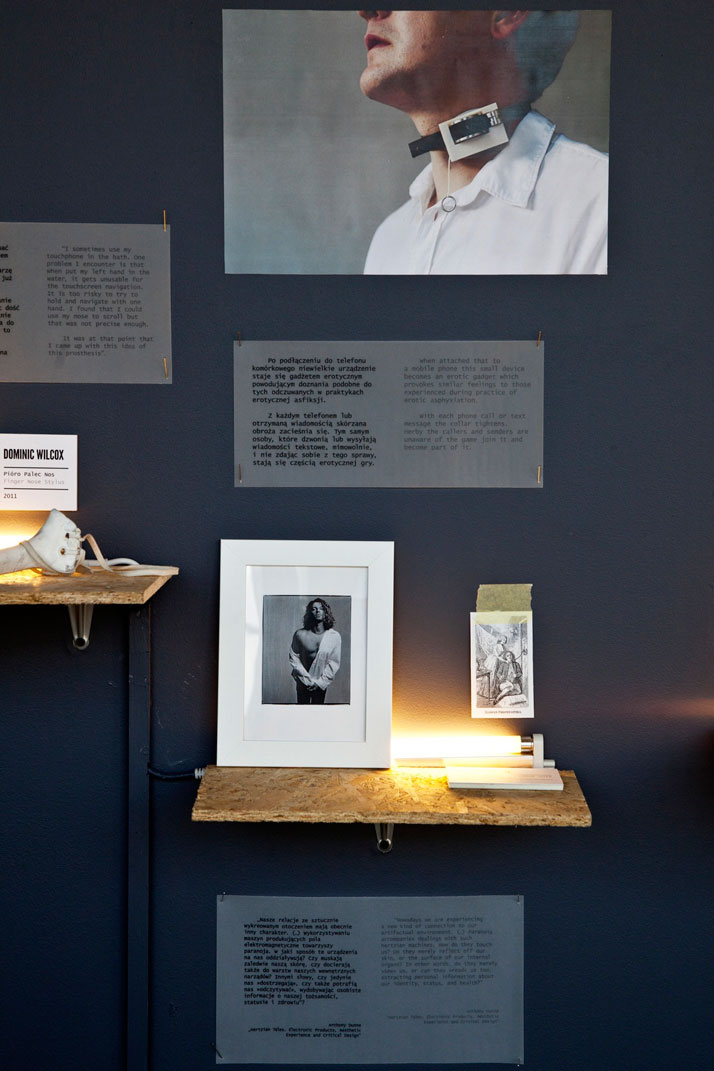
photo © Gunnar Green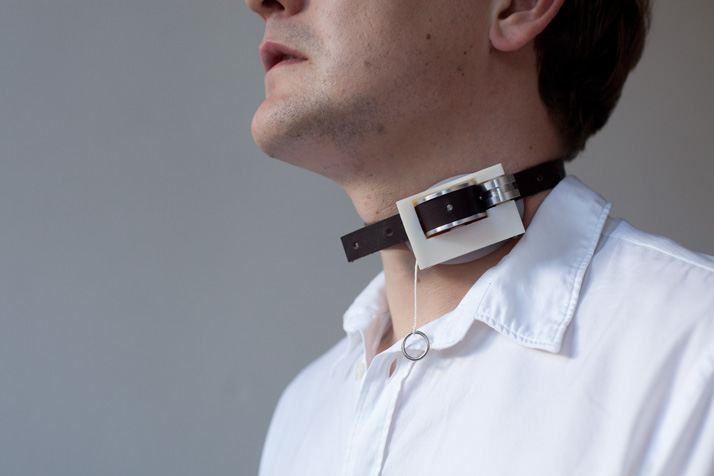
Gunnar Green // Call me, Choke me (2008)
When attached that to a mobile phone this small device becomes an erotic gadget which provokes similar feelings to those experienced during practice of erotic asphyxiation. With each phone call or text message the collar tightens. Herby the callers and senders are unaware of the game join it and become part of it.
photo © Maya Art // Design Faction, 2011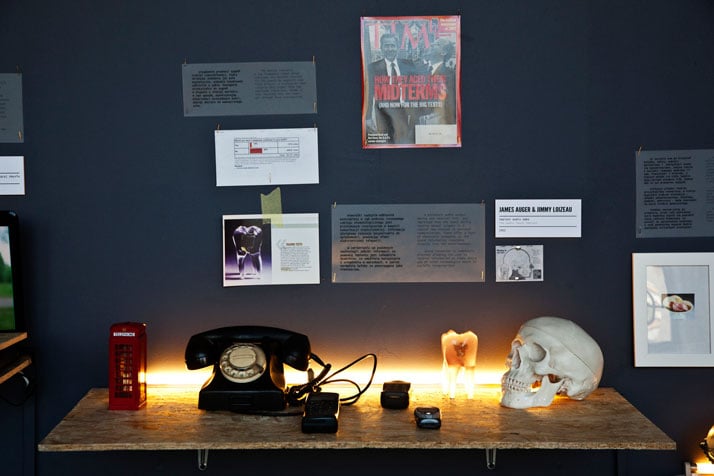
James Auger + Jimmy Loizeau // The Audio Tooth Implant (2002)
A miniature audio output device and receiver that are implanted into the tooth during routine dental surgery is a radical new concept in personal communication. These offer a form of electronic telepathy as the sound information resonates directly into the consciousness. Sound reception is completely discreet allowing the user to receive information at times where use of other technologies would be socially inappropriate.
photo © James Auger + Jimmy Loizeau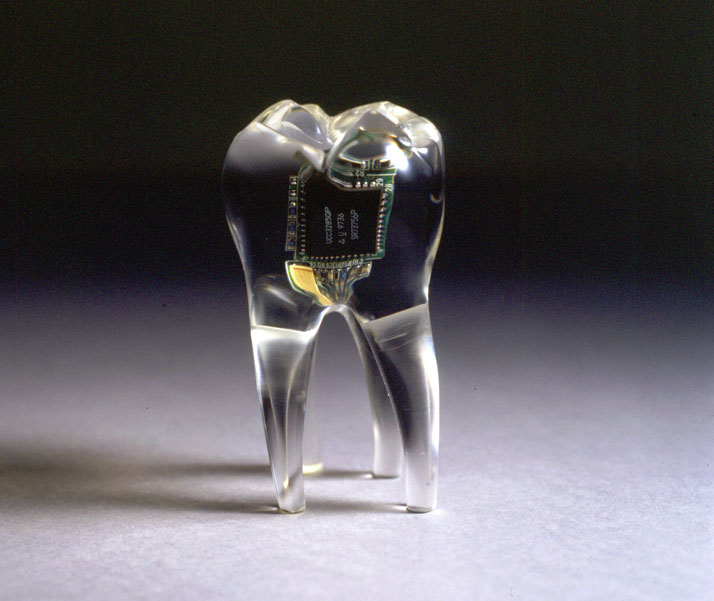
Recent Articles

Palazzo Citterio: A New Chapter in Milan’s Cultural Landscape






